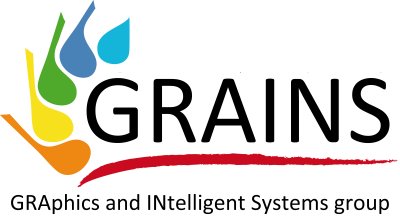| Filter by project leader: |
-
- Regional Project project, 01/2017 -
 HuManS "Human centered Manufacturing Systems"POR-FESR 2014/2020 - Azione 3 "Fabbrica Intelligente"
HuManS "Human centered Manufacturing Systems"POR-FESR 2014/2020 - Azione 3 "Fabbrica Intelligente"
Project leader: Andrea SannaHuman's ability is the main tool that allows the development of high-value-added industrial products. This research program is aimed at integrating the latest industrial automation systems for assembly operations with human capabilities, by defining new manufacturing paradigms and in particular Human Centered Manufacturing. The combination of strength, speed, repeatability, and precision of automation with the intelligence and abilities of human operators permits to obtain hybrid systems with the highest potential in terms of production process. The project aims to achieve highly innovative technical solutions that enable to perform high-complexity solutions through safe and effective interaction among human, machine and workstation. A radically new manufactoring paradigm will be created where the human operator will be at the center of the production system. The new production paradigm will be implemented through the following product/service development lines and related enabling technologies:
- Collaborative robots and mobile robots: study of systems for safe human-robot cooperation by using advanced control algorithms and strategies development to ensure operator safety in the various human-robot interaction configurations; introduction of mobile robots to expand the operational flexibility of production systems;
- Wearable Robots: development of advanced robotics solutions to support human workers in carrying out their activities while respecting the most advanced ergonomic requirements;
- Self-adaptive workstations: study of design tools for the realization of factory environments aimed at optimum human-machine interaction;
- Internet of Things in the Industry, Automatic Learning Systems, new measuring sensors: study and application of advanced sensors for data collection and control of production processes; implementation of advanced learning methodologies at the level of machines and systems with the aim of increasing adaptability with respect to the human operator.
The project will be validated using high-tech industrial applications, to ensure a high impact. In particular, audits and validations of project activities will be conducted in two successive phases. The first phase of verification involves the realization of laboratory demonstrators, while the next phase involves the implementation of project results on real case applications belonging to multiple industrial contexts.Human's ability is the main tool that allows the development of high-value-added industrial products. This research program is aimed at integrating the latest industrial automation systems for assembly operations with human capabilities, by defining new manufacturing paradigms and in particular Human Centered Manufacturing. The combination of strength, speed, repeatability, and precision of automation with the ... - EU project, 07/2013 - 06/2016EASE-R3 "Integrated framework for cost-effective and ease of Repair, Renovation and Re-use of machine tools within modern factory"VII Framework Programme - FP7-2013-NMP-ICT-FOF (608771)
Project leader: Andrea Sanna"EASE-R3 project aims at developing a novel Integrated framework for a cost-effective and easy Repair,Renovation and Re-use of machine tools within modern Factory (machining shop floor), oriented both to SME and large OEM/end-users, and covering the entire life cycle of the system (from design stage through operative life). The current maintenance policies, including e.g. RCM (Reliability Centred Maintenance) and TPM (Total Productive Maintenance), can be generally useful in answering questions such as ""how much maintenance should be done on this machine?"" ""How frequently should this part be replaced?"" ""How many spare parts should be kept in stock?"" ""How should the shutdown be scheduled?"" It is generally accepted that the vast majority of maintenance models are aimed at answering efficiency questions, i.e. questions of the form ""How can this particular machine be operated more efficiently?"" and NOT effectiveness questions (the top 5 ones!), like: - ""How can reliability, repair and EOL be included in a robust and integrated Life Cycle Cost (LCC) and LifeCycle Assessment (LCA) model of the factory (to be used for decision making along factory life cycle)?"" - ""Which are the most cost-effective and optimal Repair strategies we should tailor for sets of components/machines of the factory?"" - ""Which machine and/or components should we improve and how can we reduce repair time and cost?"" - ""Which are the most environmental-effective EOL strategies we should tailor for sets of components/machines of the factory?"" - ""How can we assess the remaining life of Re-usable components and which are most valuable Renovation technologies for the machine tools?"" The EASE-R3 project aims at developing a novel Integrated framework for a cost-effective and easy Repair, Renovation and Re-use of machine tools within modern Factory (machining shop floor), oriented both to SME and large OEM/end-users, and covering the entire life cycle of the system (from design stage throughout operative life).""EASE-R3 project aims at developing a novel Integrated framework for a cost-effective and easy Repair,Renovation and Re-use of machine tools within modern Factory (machining shop floor), oriented both to SME and large OEM/end-users, and covering the entire life cycle of the system (from design stage through operative life). The current maintenance policies, including e.g. RCM (Reliability Centred Maintenance) ... - Regional project, 07/2012 - 06/2014NUVOLA3DPOR FESR 2007-2013
Project leader: Andrea SannaThe project aims to create a Cloud Computing infrastructure for interactive 3D applications that will become usable in SaaS (Software as a Service) mode. Among the applications affected, there are instruments for visualising scientific data, CAD software, 3D modelling systems used in medical, artistic and technical fields and so forth. The project's work focuses on the development of a group of technologies that, opportunely integrated together, will allow the creation of a new type of Cloud - 3D Cloud - capable of hosting interactive 3D applications. The technologies used will then be integrated in a prototype that will allow us to evaluate the quality and performance of the results obtained, involving real users. The project focuses on three main technological issues: solutions for the remote visualisation of 3D applications, optimising their performance even on networks with limited broadband and high latency; technology for visualising and sharing the graphics processing unit (GPU) which will permit the execution of accelerated 3D applications in virtual machines; and systems for managing interactive 3D sessions within Cloud Computing infrastructures. The results anticipated contain unique elements of total innovation and could prove to be of enormous interest to companies. SMEs could have access to expensive 3D graphics applications in a pay-per-use mode, cutting the costs of acquiring software licences and hardware, while large corporations could consolidate 3D applications at company data centres, obtaining significant benefits from the reduction in CAPEX and operating costs (lowering maintenance costs, optimising the use of licences, lowering energy consumption, etc.).The project aims to create a Cloud Computing infrastructure for interactive 3D applications that will become usable in SaaS (Software as a Service) mode. Among the applications affected, there are instruments for visualising scientific data, CAD software, 3D modelling systems used in medical, artistic and technical fields and so forth. The project's work focuses on the development of a group of technologies ... - EU project, 02/2012 - 10/2015OASIS "Openly Accessible Services and Interacting Society"Competitiveness and Innovation framework Programme - CIP ICT PSP (297210)
Project leader: Andrea SannaThe project aims at building a platform of interactive services thanks to data sharing, for citizens, associations, local authorities and companies. For local authorities and institutions, this is a new way of offering public services and favouring the citizen participation. This is also the opportunity of guaranteeing a public set of co-built data confirming their accessibility for all on the same conditions, favouring innovation and the sustainable economic development within their territories. OASIS constitutes the technical, legal and economic basis allowing the creation and animation of this ""common good of data"". The objectives of the platform are: - Favouring the citizen participation for the co-creation of data of general interest, allowing an easier access and the sharing of multiple data for any players (whether public, private or individual). - Favouring the co-construction of services associating public and private bodies, citizens, associations, laboratories. - Guaranteeing a neutrality of access to services and a transparency in their pricing. - Organizing a governance around shareable data so as to guarantee its access to future generations.The project aims at building a platform of interactive services thanks to data sharing, for citizens, associations, local authorities and companies. For local authorities and institutions, this is a new way of offering public services and favouring the citizen participation. This is also the opportunity of guaranteeing a public set of co-built data confirming their accessibility for all on the same conditions, ...





